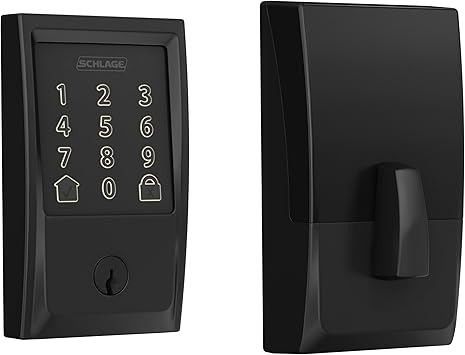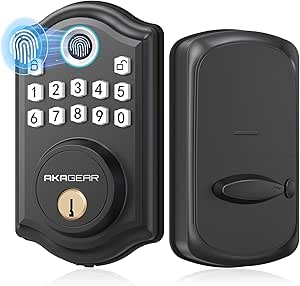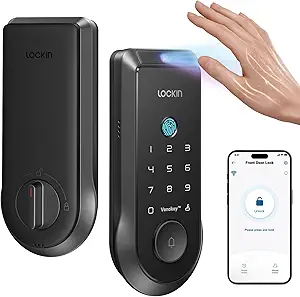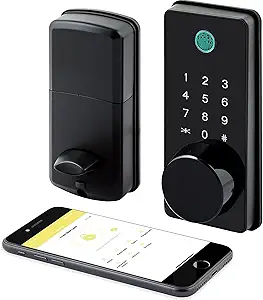How to Secure Your Home Against Intruders: A Tactical Approach

How to Secure Your Home Against Intruders: A Tactical Approach
Home security is most effective when treated like any other defensive operation. A strong first layer deters opportunists. A second layer delays anyone determined. A final layer alerts you or authorities before a breach becomes dangerous. This guide breaks down a tactical, step by step approach that strengthens each layer in a practical, realistic way.
Understand How Intruders Operate
Most break-ins are quick attempts that target weak points: dark entryways, old door frames, unsecured side gates, or homes that appear empty. Intruders rely on speed and concealment. Your goal is to slow them down, expose them, or make your home look like a hard target. Even small improvements compound into significant protection.
Understanding Home Security Fundamentals
The Role of Deterrence
Deterrence is the first line of defense in home security. The goal is to make your home less appealing to potential intruders by presenting it as a challenging target. This involves visible security measures such as:
- Exterior lighting
- Security cameras
- Signage indicating the presence of an alarm system
These elements can significantly reduce the likelihood of an attempted break-in, as most intruders prefer easy targets with low risk of detection.
Assessing Your Home’s Vulnerabilities
To effectively secure your home, you need to think like an intruder. Conduct a thorough walk-through of your property to identify potential entry points and weaknesses. Common vulnerabilities include:
- Unlocked windows
- Inadequate door locks
- Obscured areas that provide cover for intruders
This assessment will help you prioritize the security improvements that will have the biggest impact.
The Importance of Strong Entry Points
Strong, secure entry points are crucial in preventing unauthorized access. This means investing in:
- High-quality door locks
- Reinforcing door frames and windows
- Considering the installation of security doors
Additionally, ensuring that windows are not only locked but also equipped with security film or glass can make them resistant to breakage.
Leveraging Technology for Enhanced Security
Surveillance Systems
Modern surveillance systems offer a range of features that can significantly enhance your home’s security. Options include:
- Motion-activated cameras
- Night vision capabilities
- Remote monitoring via smartphone
These technologies allow you to keep an eye on your property at all times, even when you’re away, providing peace of mind and a powerful deterrent to potential intruders.
Smart Locks and Home Automation
Smart locks and home automation systems offer both convenience and enhanced security. Features include:
- Remote access
- Verification that your home is secure
- Temporary access to visitors without providing a physical key
Integration with other home security components, such as cameras and alarm systems, creates a cohesive and highly effective security ecosystem.
Alarm Systems
A comprehensive alarm system is a key component of home security. Today’s systems can be customized to fit your specific needs, including:
- Door and window sensors
- Motion detectors
- Glass break sensors
Coupled with professional monitoring services, an alarm system can ensure that any unauthorized entry is immediately detected and addressed.
Practical Measures for Everyday Security
Habitual Security Practices
Adopting habitual security practices is essential for maintaining a secure home. This includes:
- Locking doors and windows consistently
- Securing valuables in a safe
- Being mindful of what information you share publicly, such as vacation plans
Small daily habits can significantly bolster your home’s defense against intruders.
Community Engagement
Engaging with your community can be a powerful tool in enhancing home security. Neighborhood watch programs and community alert systems foster a culture of vigilance and mutual support. Sharing information about suspicious activity and working together to address common security concerns can make your neighborhood a harder target for criminals.
Landscaping and External Lighting
Strategic landscaping and lighting can play a significant role in deterring potential intruders. Keeping bushes and trees trimmed can eliminate hiding spots, while well-placed exterior lighting can illuminate dark areas, making it difficult for intruders to approach your home unnoticed. Motion-sensor lights, in particular, are an effective and energy-efficient option for enhancing security around your home’s perimeter.
Reinforcing Your Home’s Physical Security
Upgrading Door Locks and Hinges
To further enhance your home’s security, consider upgrading to high-security door locks, such as deadbolts that meet the American National Standards Institute (ANSI) Grade 1 specification. Additionally, reinforcing the door hinges with 3-inch screws can make your doors more resistant to forced entry. By doing so, you are adding an extra layer of difficulty for any potential intruder, making your home a less attractive target.
Window Security Enhancements
Beyond locks, adding window security measures can significantly deter intruders. Consider installing:
- Window locks or sash jammers
- Security films that make windows shatter-resistant
- Window bars for ground-level windows
Remember, the goal is to make each entry point as resilient as possible.
The Role of Security Doors
Another line of defense is the installation of security doors. These are specially designed to withstand forced entry attempts and often come with their own high-security lock systems. Made from durable materials like steel or solid wood, security doors act as both a physical and psychological barrier to entry. While they can be an investment, the peace of mind and added security they provide can be invaluable.
Implementing a Layered Lighting Strategy
Exterior Lighting Placement
Effective lighting is crucial for deterring potential intruders. Strategically place lights around your property to eliminate dark spots where intruders could hide. Motion-sensor lights are particularly effective as they surprise intruders and can alert you and your neighbors to unusual activity. Ensure that all entry points, including doors and ground-level windows, are well-lit.
Interior Lighting Automation
Advances in technology now allow for the automation of interior lights, making it appear as if someone is always home. Smart lighting systems can be programmed to turn on and off at certain times or operated remotely. This is especially useful when you are away from home, deterring intruders by giving the impression of occupancy.
The Importance of Visibility
Maintaining clear visibility around your property is essential. This means keeping bushes and trees trimmed to avoid providing cover for potential intruders. Additionally, consider the placement of outdoor lighting to ensure that surveillance cameras have a clear view, especially at night. Well-placed lights not only deter intruders but also enhance the effectiveness of your surveillance system.
Enhancing Security Through Technological Integration
Smart Home Security Ecosystems
Integrating various security technologies into a single cohesive system offers enhanced protection and convenience. This can include connecting your surveillance cameras, alarm system, smart locks, and lighting into one network that can be controlled and monitored from your smartphone. This integration not only simplifies the management of your home security but also allows for real-time alerts and responses to security events.
The Power of Remote Monitoring
The ability to monitor your home remotely through your smartphone is a game-changer in home security. With the right setup, you can receive live feeds from your cameras, get notifications if your alarm system is triggered, and even communicate with visitors through smart doorbells. This level of control and awareness can be incredibly reassuring, especially when you’re away.
Utilizing Security Apps and Services
Many security systems now offer companion apps and subscription services that provide additional layers of security. These can include professional monitoring, where a service monitors your home 24/7 and can alert authorities in case of an incident. Other services offer features like emergency response, security audits, and even cybersecurity protection for your home network.
Advanced Security Planning and Troubleshooting
Conducting Regular Security Audits
One of the most effective ways to ensure your home remains secure is by conducting regular security audits. This involves systematically reviewing all your security measures, from locks and alarms to surveillance cameras and lighting. Identify any areas of weakness or systems that may need updating. Remember, the effectiveness of security measures can diminish over time due to technological advancements or simply wear and tear.
Upgrading Security Systems
As technology evolves, so do the methods used by intruders. Stay ahead by periodically upgrading your security systems. This could mean updating the software of your digital security systems, incorporating AI-driven surveillance that can differentiate between regular activity and potential threats, or installing the latest models of cameras and alarms. Upgrades not only enhance security but often come with improved ease of use and integration capabilities.
Emergency Preparedness
Beyond preventing break-ins, your home’s security plan should include preparations for handling an intrusion, should it occur. This involves establishing a clear, practiced protocol for your household in the event of a break-in, including safe exit routes, a designated safe room, and an emergency communication plan. Consider integrating panic buttons or emergency alert systems within your home security setup.
Expert Tips for Optimizing Home Security
Integrating Cybersecurity Measures
In today’s connected world, protecting your physical home includes securing your digital footprint. Cybersecurity measures, such as secure Wi-Fi networks, strong passwords, and regular updates to smart home devices, are essential. Intruders can exploit digital vulnerabilities to gain physical access. Regularly review and enhance your cybersecurity practices to safeguard against this.
Leveraging Environmental Design
Utilize the principles of environmental design to naturally deter intruders. This can include strategic placement of thorny plants under windows, using gravel paths that make approaching footsteps audible, or designing an open landscape that offers few hiding spots. These subtle cues can make your home less inviting to potential intruders without sacrificing aesthetics.
Advanced Surveillance Features
Consider advanced surveillance features like facial recognition, which can alert you to unfamiliar faces on your property. Also, explore options for integrating your surveillance system with local law enforcement for rapid response in the event of an emergency. Advanced features can provide not only enhanced security but also greater peace of mind.
Putting It All Together
Revisiting Your Security Strategy Regularly
Security is not a set-it-and-forget-it matter. As your life and the world around you change, so too should your approach to home security. Make it a habit to review and adjust your security strategy at least once a year or in response to significant life changes, such as a new family member or a major home renovation.
Building a Community Network
Remember, security doesn’t only rely on technology or physical measures. A robust neighborhood network can be one of your best defenses against crime. Participate in local watch programs, use community alert apps, and maintain good relationships with your neighbors. Sharing information about suspicious activities and looking out for each other can significantly enhance the security of your entire community.
Compare Products
Having just explored the importance of deterrence in home security, it’s time to consider how specific products can fortify your home’s defenses. The Schlage Encode Smart Wi-Fi Deadbolt with Century Trim in Matte Black and the AkaGear Smart Door Lock, featuring fingerprint and electronic keypad access, are prime examples of technology designed to make your home a less appealing target to potential intruders. Both options offer a blend of convenience and advanced security features to protect your front door.
Choosing between these smart locks involves weighing their features against your personal security needs and preferences. Do you prioritize the ease of Wi-Fi connectivity and remote access, or is the appeal of a fingerprint sensor for quick, keyless entry more your style? Comparing these options directly will
| Feature / Product | Schlage Encode Smart Wi-Fi Deadbolt with Century Trim in Matte Black | Keyless Entry Door Lock – AkaGear Smart Door Lock, Fingerprint Electronic… | Lockin Veno Smart Lock with Palm Vein, Keyless Entry Smart Locks for Front… | LOCKSTAR® Smart Door Lock • Keyless Entry Deadbolt Door Lock • Multiple… | ULTRALOQ Bolt NFC Smart Lock with Apple Home Key, HomeKit, Keyless Entry… |
|---|---|---|---|---|---|
 |  |  |  |  | |
| $378.21 | $120.32 | $149.99 | $139.97 | $230.84 | |
| Shop now → | Shop now → | Shop now → | Shop now → | Shop now → | |
| Technical Specifications | |||||
| Brand | SCHLAGE | AkaGear | Lockin | LOCKSTAR | ULTRALOQ |
| Wattage | N/A | N/A | N/A | N/A | N/A |
| Voltage | N/A | N/A | N/A | N/A | N/A |
| Battery Capacity | N/A | N/A | N/A | N/A | N/A |
| Battery Life | Alkaline | N/A | Lithium Polymer | N/A | Alkaline |
| Efficiency | N/A | N/A | N/A | N/A | N/A |
| Screen Size | N/A | N/A | N/A | N/A | N/A |
| Memory | N/A | N/A | ✘ | N/A | N/A |
| Connectivity | N/A | N/A | Bluetooth, Matter, Thread, Wi-Fi | Wi-Fi | 2.4G Wi-Fi, Bluetooth |
